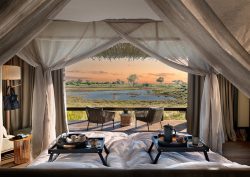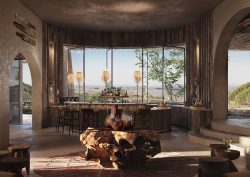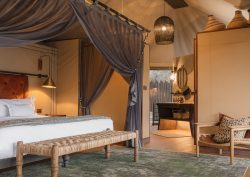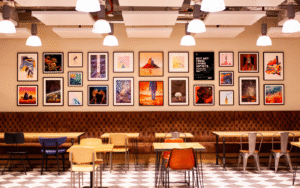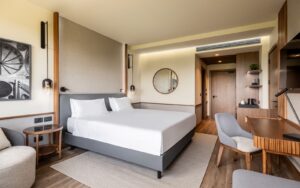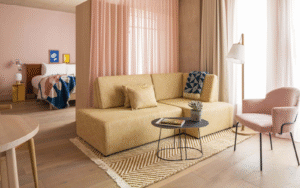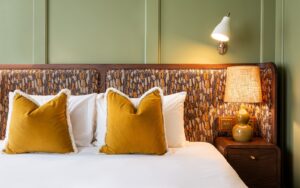Checking in to Wilderness Mokete, Botswana
Wilderness Mokete is one of the latest additions to the Wilderness portfolio of safari camps across eight countries in Africa. Last summer, Sophie Harper was invited to explore the new site for a masterclass in conservation tourism on a trip of a lifetime…

I spend a lot of time talking to designers about experiential design and cultural immersion – giving hotel guests a unique experience that will stay in their memory and make them smile each time they recall their visit. I’ve been fortunate enough to have had a number of such experiences, but never have I felt more intensely swallowed up by the locality or natural surroundings than during my trip to Botswana last summer, courtesy of the lovely folk at Wilderness.
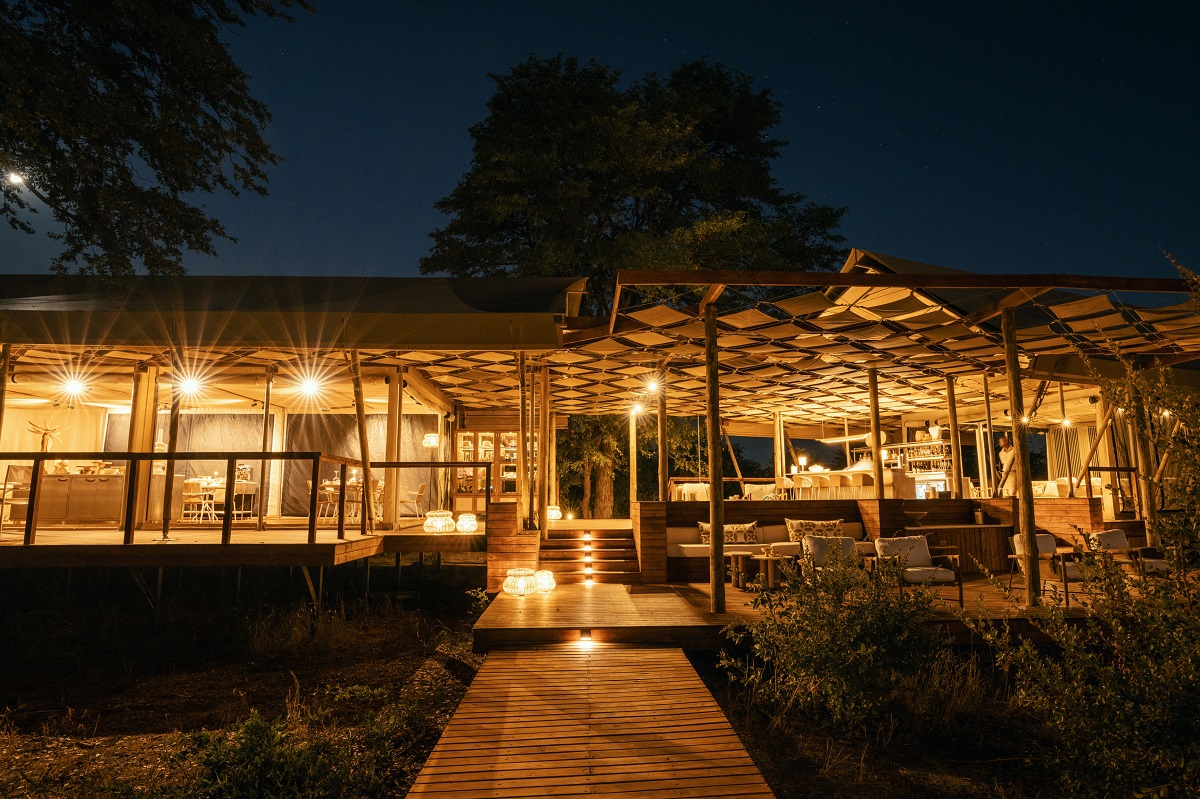
Image credit: Wilderness
One of my favourite stories from the trip (and there are many) is the night I heard the unmistakable sound of several heavy-pawed animals circling my tent as I was catching up on work. I slowly closed my laptop and looked into the darkness in front of me and became acutely aware that although I could see nothing but pitch-black, the interior of my tent (which feels like a mockery of the word when you consider the size and build quality of the beautiful guest accommodation) was lit up for all and sundry to admire – and so whatever was outside probably had a pretty good view of me.
At this point I decided to slowly move across to my bed where I could climb under the covers and pull the thick curtains around it to help me ‘disappear’. I calculated around four, maybe five, largeish animals were right outside based on the sound of paws on my walkway and the soft ground outside. The noises they were making were difficult to determine, but scuffing and crunching sounds were a little disconcerting.
The night before, I had asked for the roof of my tent to be opened up – a gorgeous feature above the bed for guests to stargaze at the night sky above. It had been such a novelty on that first night, but laying there that second night, trying not to move whilst listening to what sounded like jaws gnashing, I couldn’t help but wonder if the stars were the only thing I’d see peering in at me from the outside.
Clearly the bed was too comfortable though, as despite being aware of only a relatively thin layer of canvas separating me from whatever was outside, I managed to sleep quite soundly! The next morning, I opened my door tentatively, checking the sight of every bush and rock meticulously before making my way promptly to the main lodge and dining area to tell my travel companions of my night’s disturbances.
Turns out it was one of the local lion prides… yep, I hadn’t imagined it – five lionesses had made themselves comfortable next to my tent to tuck into their evening’s kill. The group thought it would be fun to return the favour by tracking the pride down and having our breakfast with them, so that’s what we did. Yes, really.
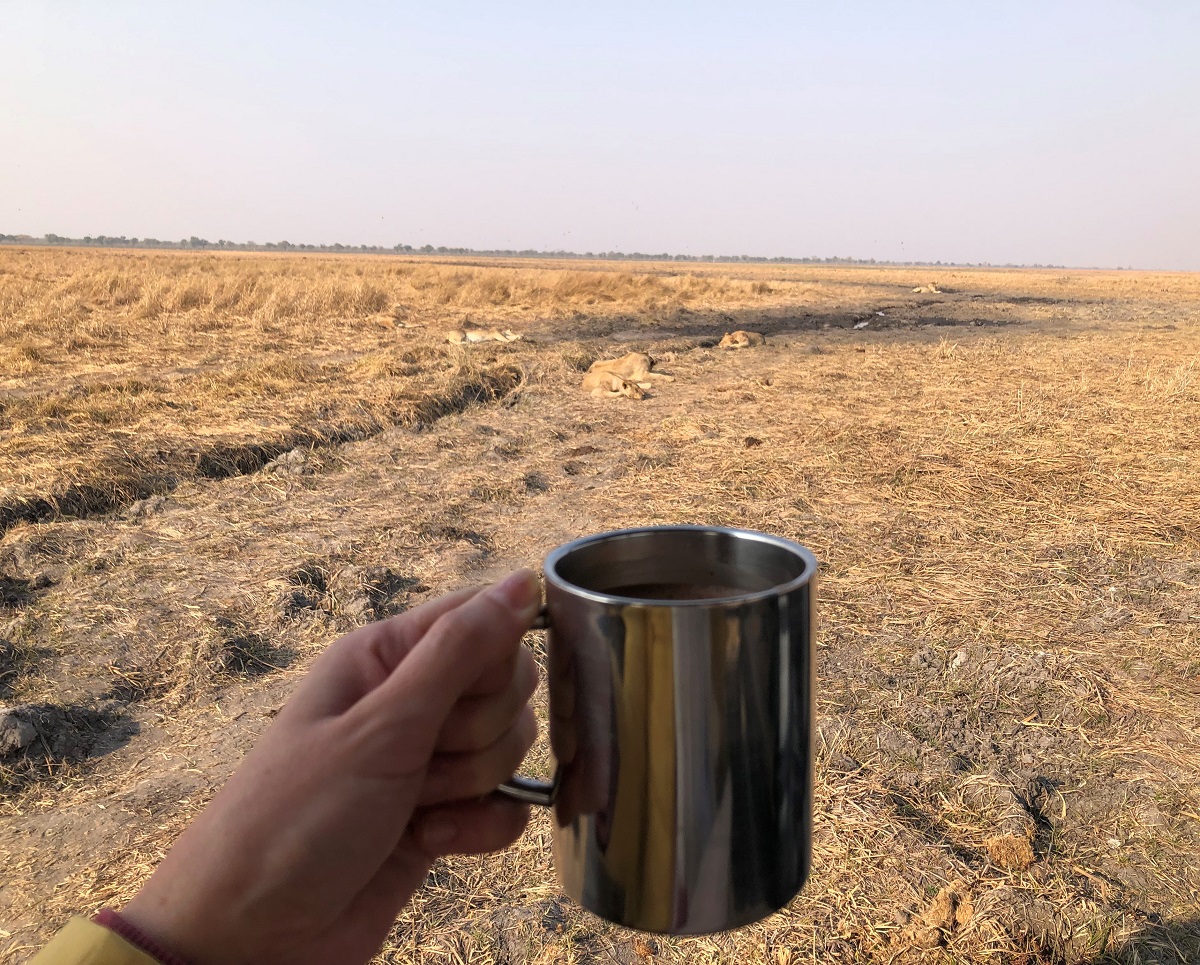
Image credit: Sophie Harper (breakfast with the pride)

Image credit: Sophie Harper (it doesn’t get wilder than this)
I still pinch myself retelling this story as it feels so unreal whilst tapping away on my keyboard in Sussex; which is marginally less ‘wild’ than the Okavango Delta. But that’s kind of the point, isn’t it? From the moment we landed (by chopper) in the remote region of Mababe, there was a sense of really being out in the wilds of Africa.
Climbing into our Jeep after landing in the dusty wilderness, we took a scenic route to the camp, bumping along sandy tracks and dodging low hanging branches. Our trusty guide, Vasco, who had been keeping our group safe and laughing constantly since we landed in Johannesburg explained that the company ethos is to have as little impact on the land and the animals as possible, so it feels wild because it really is wild – nothing is staged or orchestrated – and here we were privileged enough to witness it in all its glory.
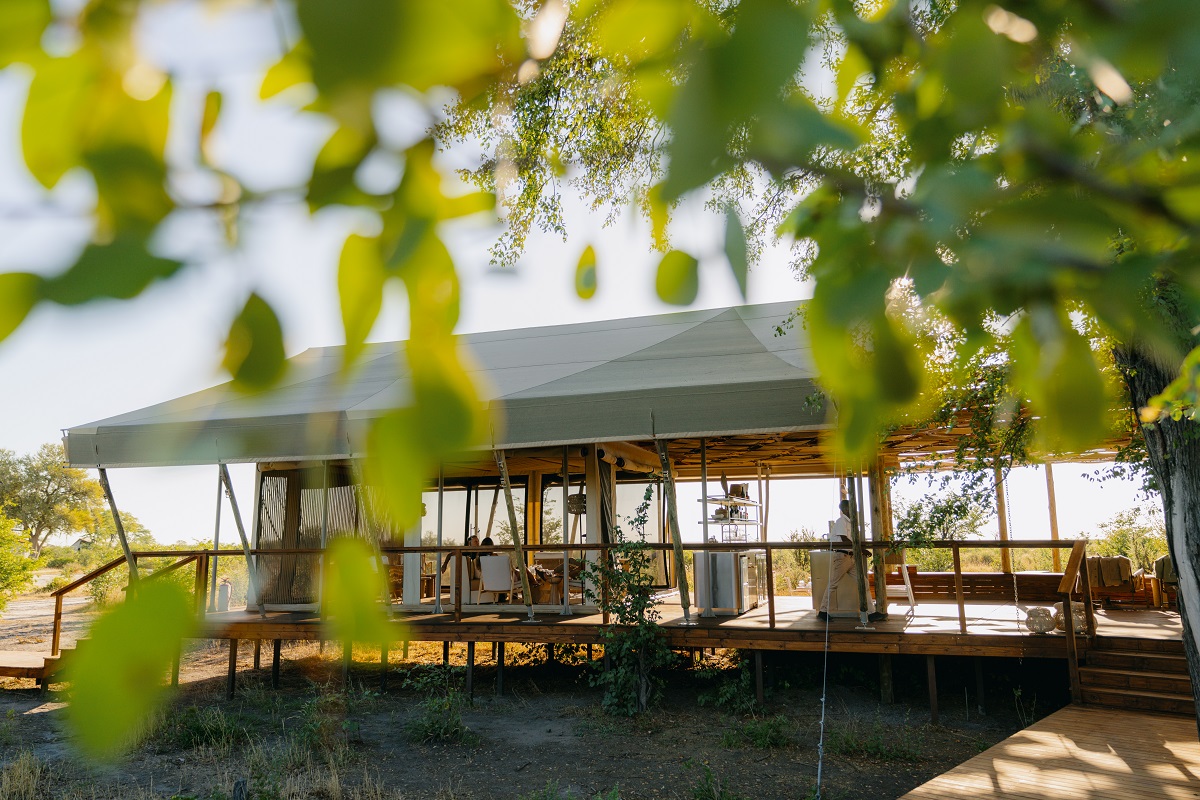
Image credit: Wilderness
On our arrival to camp, the Mokete team swayed rhythmically on deck welcoming us in choral harmony, smiles beaming and offers of refreshments as we walked the wooden path to check-in. Mokete is unlike other safari camps, in that it is low-lying and set on the flat terrain of the Mababe Depression – meaning views of the landscape stretch for miles and are unobstructed. It’s both exciting and unnerving knowing how easily wildlife (and camp visitors) can be spotted from every direction.
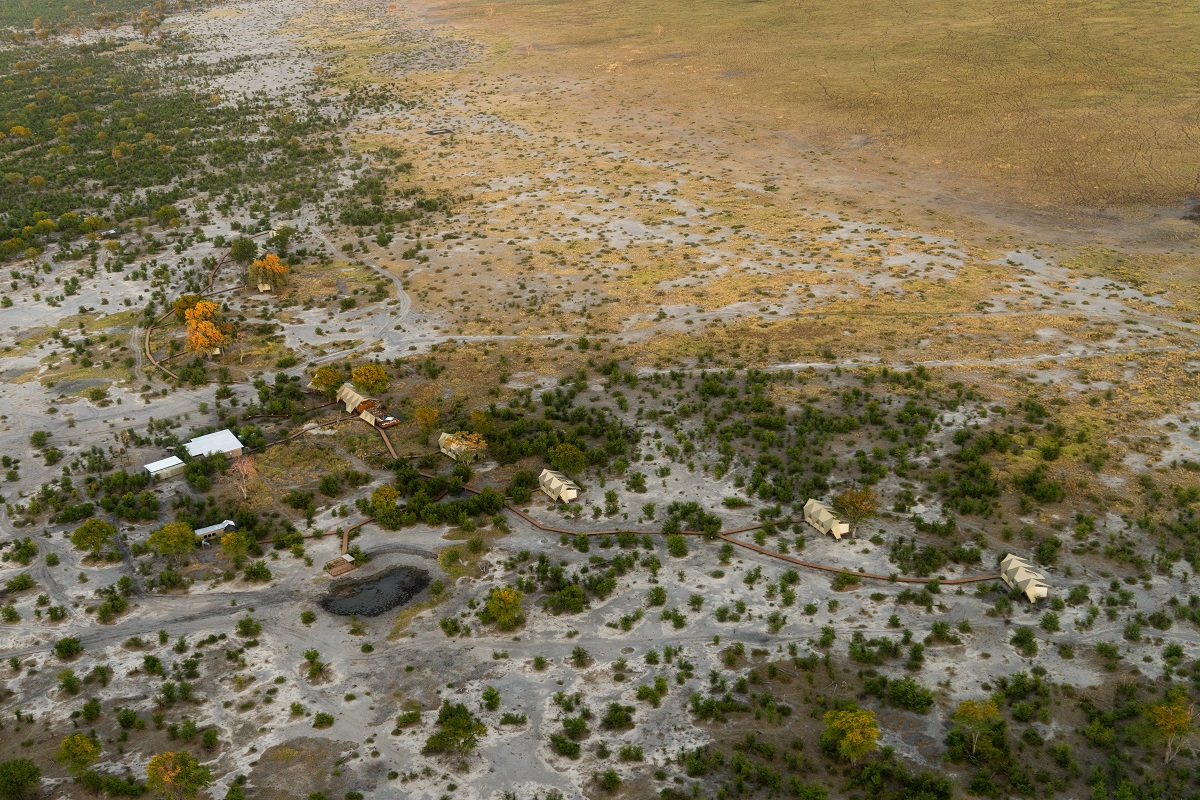
Image credit: Wilderness
The camp itself, designed by reMORPHED Arch & Design and Michele Throssell Interiors, is light and breezy, with open sides to the main lounge, bar, and dining areas in order for the views to steal the limelight. Saying that, this doesn’t mean any compromises have been made with the design of the camp, which is almost marine-like with its diamond canvas ceiling, ropework, and decking, but taps into the typical safari palette of warm and neutral tones that blend seamlessly with the landscape.
Behind the bar area is a cosy communal space filled with comfortable seating – a large sofa and a selection of chairs and small tables arranged for social gatherings. In front of the bar is a lowered seating area perfectly placed to capture the best views of the sunset where built-in banquettes and deep cushioned armchairs offer an array of seating options. The deck stretches out to a wooden walkway that curves around to form a camp firepit area to comfortably seat 20 guests around the open fire.
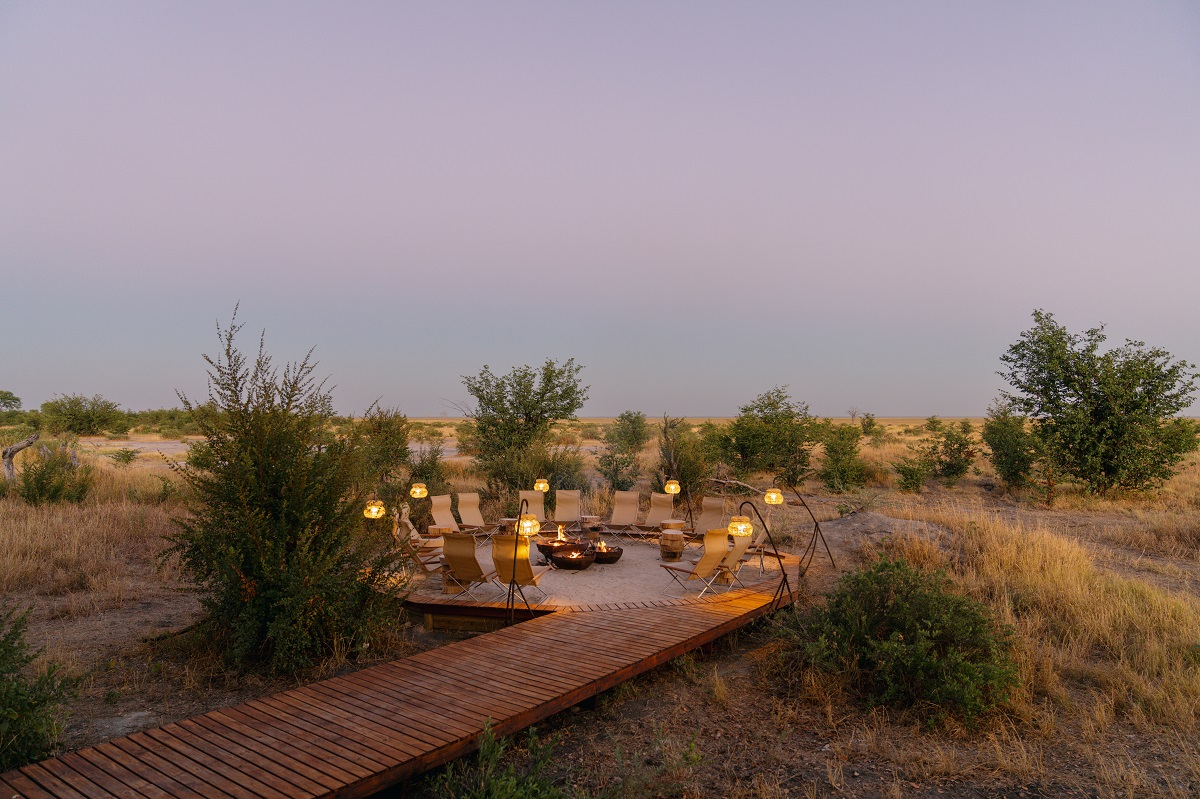
Image credit: Wilderness
Centrally placed, the main dining area is an intimate space made up of clusters of tables both inside and outside on the balcony. The design is clean and simple, comprising a few artistic details on the wooden clad walls and ambient lighting and handcrafted wares dotted through the space. The main attraction is of course the view, which is spectacularly framed from the awning pillars of the verandah. From the dining area, there is a pool deck and lounge space offering guests spectacular views of the rugged landscape.
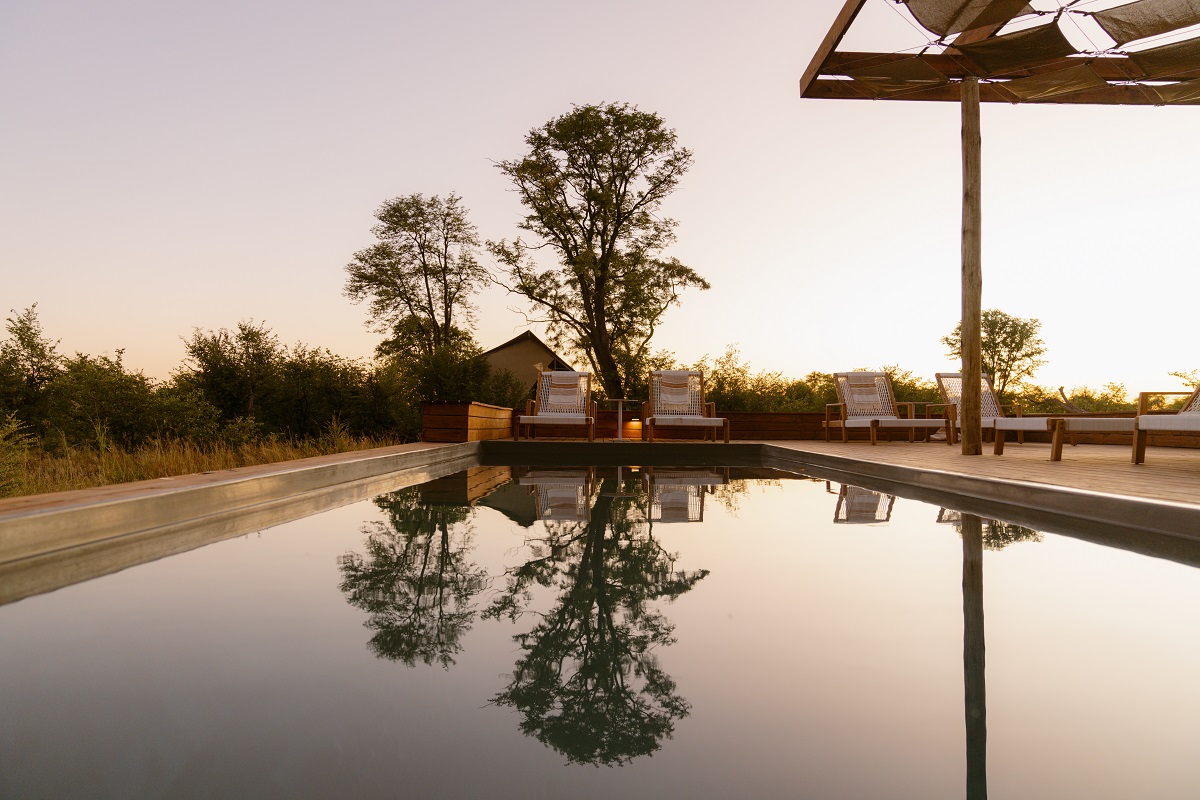
Image credit: Wilderness
The guest accommodation is separated from the main building by wooden walkways, with maybe 100 feet between each to give guests a true sense of being in the middle of nowhere. The spacing of each ‘tent’ has been designed to allow the wildlife to pass through camp without too much destruction! The walkways, though slightly raised, are low-level with flattened sections to give less agile animals ease of passage.
Each tent is set on a slightly raised platform, with a viewing deck and plunge pool to the left of the entrance. Inside, an open living space is set around a relaxing lounge area with sofa and coffee table, while a working space is behind, but offers quite the view from the desk. Moving through the tent to the bedroom, the space is cleverly sectioned off by a rope wall, which clearly divides the space whilst still feeling open plan. The superking bed is perfectly placed in a cocoon-like swathe of pale but weighty curtains, which I can attest offers a sense of safety and reassurance when drawn, and helps frame the bedroom area when open. The wide wooden headboard is custom-made by local craftspeople, as is much of the furniture and natural raffia rugs.
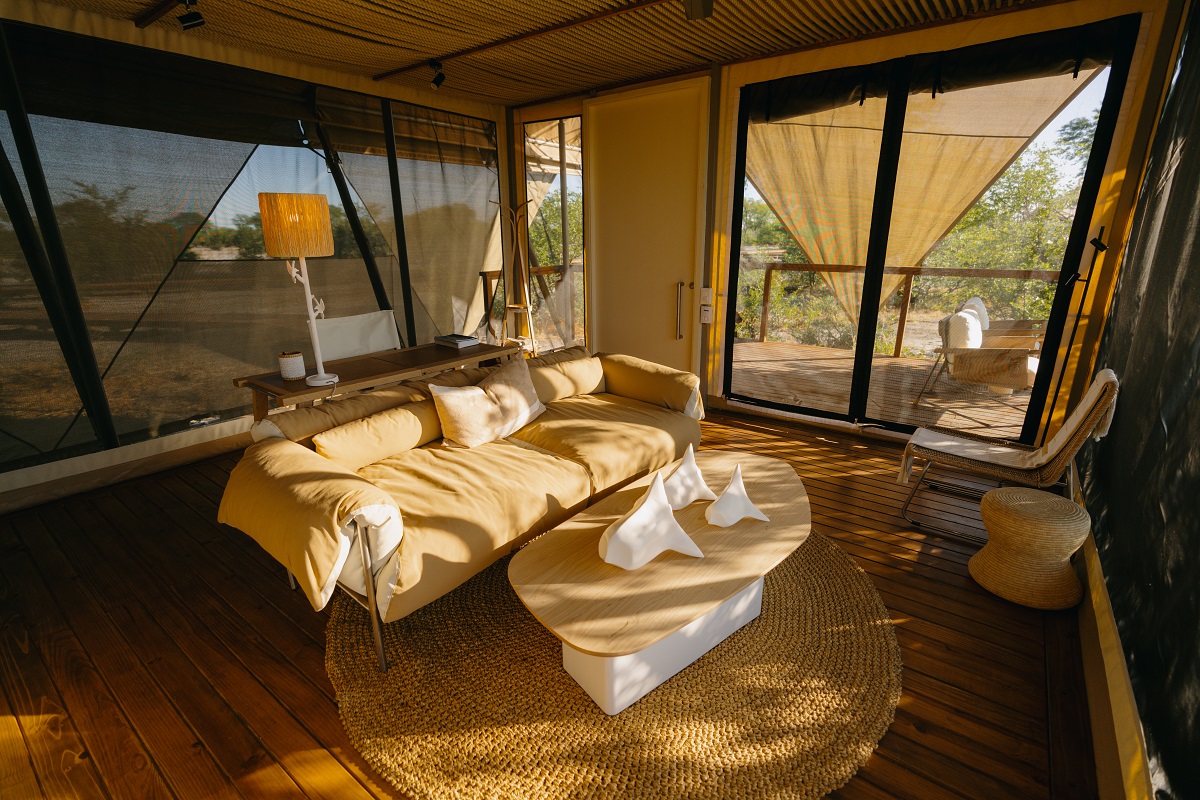
Image credit: Wilderness

Image credit: Wilderness
The shower has a room to itself one side of the huge double vanity, almost camouflaged into the wall. It is a generous space and allows whoever’s using it to shower with an open, floor-to-ceiling view of the wilderness (with canvas netting of course), which feels quite harmonious and liberating for those not used to being so at one with nature. To the other side of the vanity, the WC offers a more discreet space decorated with local artwork.
The full stretch of the tent, which is a good 12 metres in length acts as an uninterrupted widescreen view over the bush with thoughtful area sectioning. The cantilevered sliding roof is a stroke of genius, giving the guest the option to keep it closed and be enveloped in the darkness, or to open it up and drink in the night sky.
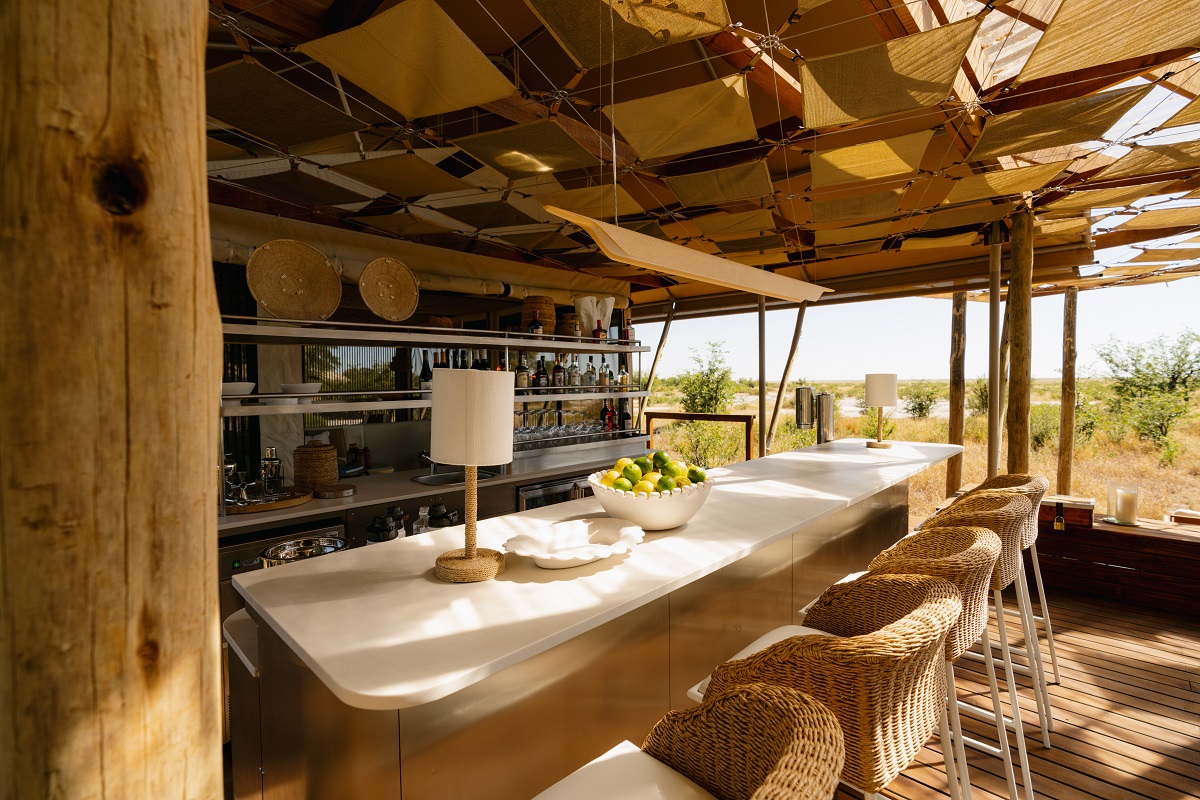
Image credit: Wilderness
This site is about as wild as it gets and offers even the most seasoned safari goer an unforgettable experience. Speaking to Vasco about how the Wilderness development team selected this specific area to set up camp, he told us that he and one of his team were responsible for scoping out the local vicinity. So one night, a year or so prior to Mokete being constructed, he and a colleague drove out, pitched a flimsy two-man tent, and settled in for the evening with a couple of beers. They’d witnessed the dazzling night sky, which really is something when you’re so far away from any kind of light pollution, and had a good feeling about the wildlife they might spot during their short trip. It was as they were readying themselves for sleep when they realised just how close to nature they were… hooves clattered fast and furiously towards their little tent and just as Vasco was about to investigate, they hear the pounding paws and gnarl of a lion. They were caught in the middle of a chase as a lioness bounded after a buffalo, chasing it in circles around the tent, the commotion causing the sides to bend and sway. Apparently that was the deciding moment, “I knew then this was the perfect spot for our next camp,” Vasco told us, laughing as he recalled the fright on his colleague’s face that night.
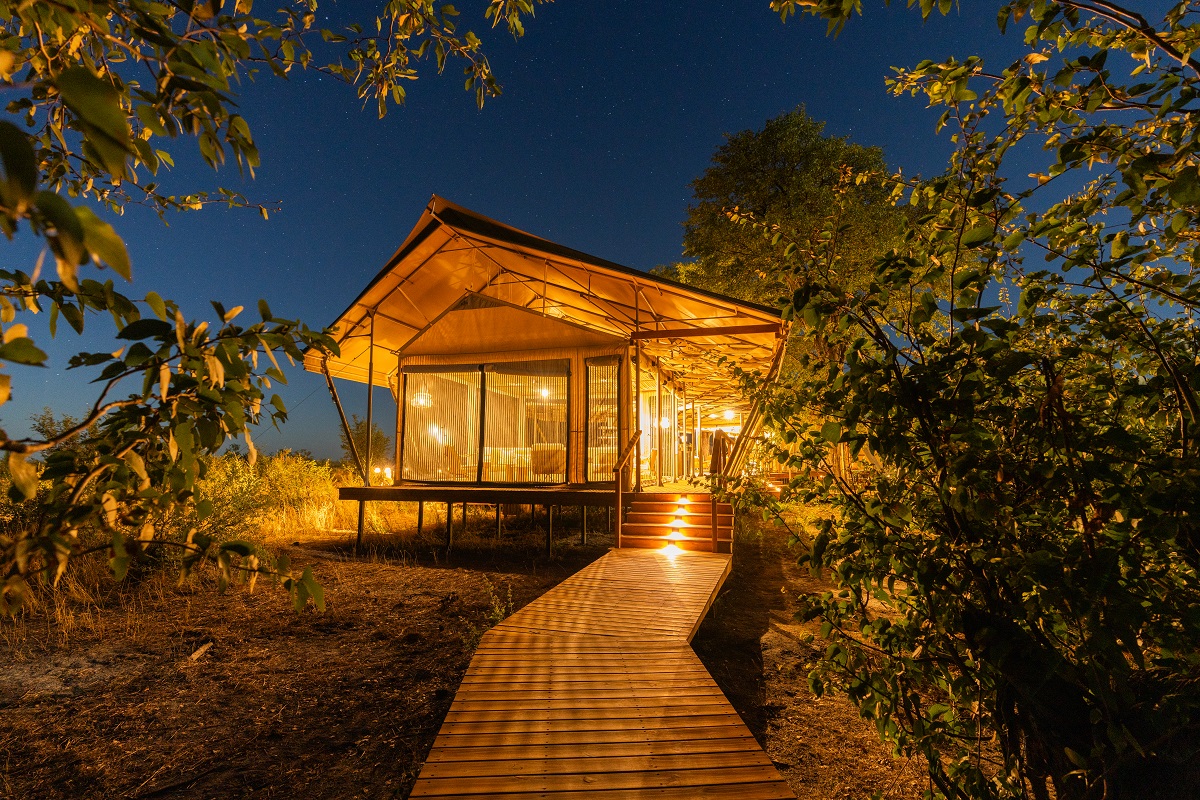
Image credit: Wilderness
Needless to say I enjoyed my stay at Mokete and would return in a heartbeat. The camp currently consists of nine luxury en-suite tents, which took under a year to construct. The site is completely off-grid, utilising renewable PV energy systems and on-site water management. The materials selected to build Mokete are natural and locally sourced and play a key role in the company’s ‘light footprint’ ethos. These camps are not designed as permanent structures, and therefore are made with the idea that once they are deconstructed, there would be no trace of the original camp within a handful of months – it makes you wonder if the same approach couldn’t be taken with other structures.
What is Wilderness?
Wilderness was founded in Botswana in 1983 by two overland safari guides – Colin Bell and Chris McIntyre. Headquartered in Gaborone, Botswana. It operates camps and mobile safaris across Botswana, Kenya, Namibia, Rwanda, South Africa, Zambia and Zimbabwe. Known for its ongoing conservation work, the company is helping to conserve some 33 species on the IUCN Red List and lists some 2.3 million hectares as being under its protection.
Through the Wilderness Trust, Wilderness Safaris funds more than 20 conservation, community and anti-poaching projects every year, and it is also a primary sponsor of Children in the Wilderness, a non-profit organisation that facilitates sustainable conservation through leadership development and education of children in Africa.
Wilderness has a number of projects currently underway, with Bisate Reserve Rwanda having opened last September (and an extensive Bisate wellness offering opening later this year), Wilderness Chitabe opening in April following a redesign, Wilderness Mombo Wellness opening in June, and Wilderness Magashi Peninsula currently under early construction.
Main image credit: Wilderness





